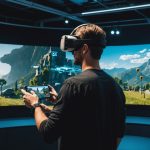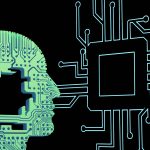Artificial intelligence (AI) has revolutionized the realm of image processing. From image recognition to object detection and facial recognition, AI-driven computer vision applications have permeated various sectors. However, the success and efficiency of these applications depend heavily on the optimization of underlying AI models. In this article, we will delve into the methods for optimizing AI-driven image processing applications to ensure you achieve unparalleled performance.
The Role of Deep Learning in Image Processing
Deep learning acts as the backbone of modern image processing applications. By leveraging neural networks, these systems can perform complex image analysis tasks with high accuracy. The secret lies in the depth of the learning models, which contain multiple layers capable of extracting intricate patterns from images.
This might interest you : How to create a secure environment for AI model development using Docker containers?
Deep learning models are trained on vast datasets of labeled images. This training process involves adjusting the weights of the neural networks to minimize errors and improve model performance. The complexity of these models allows them to excel in tasks like image recognition, where traditional methods might falter.
However, the complexity of deep learning models can also be their Achilles’ heel. Training such models is resource-intensive, requiring substantial computational power and time. Optimizing these models is crucial to make them viable for real-world applications. Optimization methods such as fine-tuning hyperparameters, using more efficient architectures, and leveraging transfer learning can significantly enhance model efficiency.
In parallel : What are the steps to develop a secure AI-driven platform for remote work collaboration?
Optimization Techniques for AI Models
Optimizing AI models is essential for improving their performance and making them suitable for real-world applications. Several techniques can be employed to optimize these models, each with its own set of advantages.
Hyperparameter Tuning
Hyperparameters are settings that dictate the behavior of the learning algorithms. Examples include the learning rate, batch size, and the number of layers in a neural network. Adjusting these settings can profoundly impact model performance. Techniques like grid search, random search, and Bayesian optimization can be used to fine-tune hyperparameters effectively.
Efficient Architectures
The choice of architecture plays a significant role in the model’s efficiency. Architectures like Convolutional Neural Networks (CNNs) are specifically designed for image processing tasks. More recent innovations like Residual Networks (ResNets) and EfficientNets offer even better performance and efficiency. These architectures allow for deeper networks without the issues of vanishing gradients, thereby improving both the speed and accuracy of the model.
Transfer Learning
Transfer learning is a technique where a pre-trained model on a large dataset is fine-tuned for a specific task. This approach saves time and resources, as the model has already learned useful features from the general dataset. Fine-tuning such models for specific tasks like object detection or facial recognition can yield excellent results with relatively less training data.
Enhancing Real-Time Performance in Image Processing
For many applications, especially those involving real-time image processing, model optimization is not just about accuracy but also about speed. Real-time applications like autonomous driving or facial recognition systems require models that can process images quickly and efficiently.
Hardware Acceleration
One of the most effective ways to improve real-time performance is through hardware acceleration. Graphics Processing Units (GPUs) and specialized hardware like Tensor Processing Units (TPUs) can significantly speed up the training and inference times of deep learning models. Utilizing these hardware accelerators can make real-time applications feasible.
Model Pruning
Model pruning involves removing unnecessary weights or neurons from a neural network without significantly affecting its performance. This technique reduces the model’s size and computational requirements, making it more suitable for real-time applications. Pruned models can run faster and consume less memory, which is crucial for applications deployed on edge devices.
Quantization
Quantization is another technique that can enhance real-time performance. It involves reducing the precision of the numbers used in the model’s calculations. For example, converting 32-bit floating-point numbers to 16-bit integers can speed up computations without a significant loss in accuracy. This reduction in precision can lead to faster inference times and lower power consumption, making it ideal for real-time applications.
The Importance of Robust Training Data
The quality and quantity of training data are crucial for the success of any AI-driven image processing application. High-quality, diverse datasets ensure that the model can generalize well to real-world scenarios. However, acquiring and curating such datasets can be challenging.
Data Augmentation
Data augmentation techniques can help in generating a more diverse training dataset without the need for additional images. Techniques like rotation, scaling, flipping, and color adjustments can create variations of the existing images, thereby enriching the dataset. This augmented data can help the model become more robust and improve its performance in real-world applications.
Synthetic Data
In some cases, acquiring real-world data may be impractical or expensive. Synthetic data generation can be a viable alternative. By using computer-generated images or simulations, one can create large, labeled datasets for training purposes. This synthetic data can be particularly useful for tasks like object detection or facial recognition, where real-world data is scarce or sensitive.
Data Preprocessing
Effective data preprocessing is essential for optimizing AI models. Techniques like normalization, resizing, and eliminating noise from the images can significantly improve the quality of the training data. Well-preprocessed data ensures that the model learns the right features and patterns, leading to better performance.
Model Evaluation and Continuous Optimization
Once a model is trained, it is essential to evaluate its performance rigorously and continuously optimize it. This process involves several steps, each aimed at ensuring that the model performs optimally in real-world scenarios.
Cross-Validation
Cross-validation is a technique used to assess how well a model generalizes to an independent dataset. It involves dividing the dataset into multiple subsets and training the model on different combinations of these subsets. This approach provides a more accurate estimate of the model’s performance and helps in identifying any overfitting issues.
Performance Metrics
Choosing the right performance metrics is crucial for evaluating the model’s effectiveness. Metrics like accuracy, precision, recall, and F1-score provide valuable insights into the model’s performance. For specialized tasks like object detection or facial recognition, metrics like Intersection over Union (IoU) and Average Precision (AP) can be more informative.
Model Retraining
Continuous optimization often involves retraining the model with new data. As new data becomes available, it is crucial to update the model to maintain its relevance and accuracy. Retraining ensures that the model adapts to changing conditions and remains effective over time.
Monitoring and Feedback
Deploying a model is not the end of the optimization process. Continuous monitoring and feedback are essential to ensure that the model performs well in real-world conditions. Monitoring tools can help identify any performance degradation over time, allowing for timely interventions and updates.
Optimizing AI-driven image processing applications is a multifaceted endeavor that involves fine-tuning models, enhancing real-time performance, ensuring robust training data, and continuous evaluation. By employing techniques like hyperparameter tuning, efficient architectures, transfer learning, hardware acceleration, and data augmentation, you can significantly improve the performance of your image processing applications.
The future of AI-driven image processing is promising, with advancements in deep learning, neural networks, and model optimization methods paving the way for more efficient and accurate applications. By staying abreast of these developments and continually optimizing your models, you can ensure that your image processing applications remain at the cutting edge of technology.
In summary, the key to optimizing AI-driven image processing applications lies in a holistic approach that encompasses model tuning, robust data management, real-time performance enhancement, and continuous evaluation. By mastering these aspects, you can unlock the full potential of AI in transforming computer vision tasks and applications.











